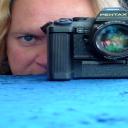Yahoo Answers is shutting down on May 4th, 2021 (Eastern Time) and beginning April 20th, 2021 (Eastern Time) the Yahoo Answers website will be in read-only mode. There will be no changes to other Yahoo properties or services, or your Yahoo account. You can find more information about the Yahoo Answers shutdown and how to download your data on this help page.
Trending News
world war 2?
the police are clamping down on photography in public because of
the "war on terror" my question is what sort of regulations did they
have in WW2 about taking photos? and did it work? The home front war
seems to be well covered in the news and images of every day life by
the people? I would be grateful for any info
I am more interested in how it affected the man in the street photographing, public places, days out, events the home front lifestyle stuff mot the direct war stuff like airfields and army camps and direct war information and the restrictions on them.
4 Answers
- 1 decade agoFavorite Answer
Wow! Great question!.
My grandmother worked in a defense plant wiring aircraft. They were not allowed to take photos beyond the factory gates.My grandfather worked as a longshoreman and only selected press and officials with security credentials were allowed to take photos in the port.
- jannielLv 61 decade ago
During WW2, the media was closely censored as were movies and newsreels for security purposes, and the images that were released were often part of a carefully planned propaganda and morale-building campaign. Anyone caught taking photos near sensitive areas such as defense plants, military installations equipment and bases and in Britain, coastal areas, railways and bridges as well was liable to be arrested and prosecuted and in any case during the war photo film and equipment was not generally available to civilians. Much the same regulations applied in german-occupied Europe and in Russia.
An interesting footnote is that in the early stages of the planning for the invasion of mainland Europe , the British Govt. made an appeal to the public to send in any photos they had taken on holidays and trips to Europe. The main reason was for intelligence on the channel beaches of France and other potentially strategic locations there, but the public were not informed of this.
- Tim DLv 71 decade ago
On the opposite side prior to the Invasion of Normandy, the BBC broadcast requests for any pictures that had been taken on holiday in occupied nations to produce accurate maps and models for the Overlord planners, naturally there were concerns that the Germans would hear the requests so no specific areas were broadcast.
- 1 decade ago
Reportedly, director Alfred Hitchcock, who was a war photographer & filmmaker at the "front", recorded footage of British troops making initial contact with (& liberating) a concentration camp. His film is so horrifying, that it's never been released publically.
So one can assume, that any of the footage from WW2 was probably severely edited and/or to some degree staged for the cameras. It was a propaganda tool.




